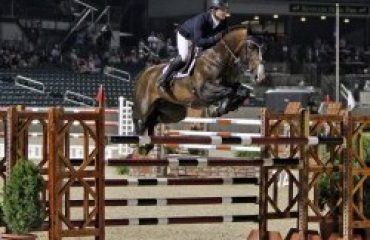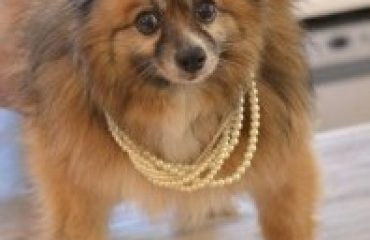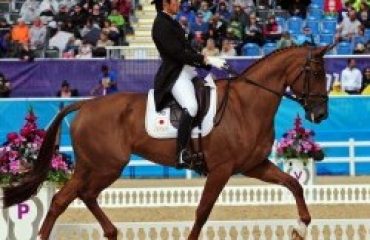By George Williams
This is certainly an interesting time in the dressage world. On the one hand, we’re seeing more and more emphasis on harmony, especially from the top combinations in our sport. Jessica Von Bredow-Werndl’s freestyle at the FEI World Cup Finals in Omaha was, in so many ways, the epitome of harmony—no one can deny that she and Tsf Dalera Bb truly danced. Happily, one can also say the same of the other horse/rider combinations. Certainly, the Danish rider Nanna Skodborg Merrald and Blue Hors Zepter, who earned second place, displayed harmony as well.
There are many memorable past paragons of dressage harmony—one that immediately comes to mind is Debbie McDonald on Brentina. However, the trend really gained momentum with Charlotte Dujardin and Valegro. Since then, we’ve been treated to even more fine examples of harmonious partnerships. Sabine Shut-Kerry on Sanceo has become an American gold standard. I think Lottie Fry on Glamourdale is an interesting metric in that they are an unusual partnership with an amazing aspect of power—think, extended canter. It’s fair to say that today there are more examples of harmonious riding than ever before in the history of our sport, certainly far too many to mention in this column.
These images of harmony and partnerships are what I believe made most of us fall in love with dressage in the first place. It’s what the majority of us all strive for when we put our foot in the stirrup.
On the other hand, there’s the other cold, almost cynical side of the sport. And that side seems to be on people’s minds now more than ever before. It’s true that, as with most sports—like it or not—ours is a business. To a degree, that is essential. It takes money to breed, raise and train horses. It takes money to build stadiums with good footing and shade for spectators. Oh, and what about the price of hay? I think you get the gist.
While it is a business, that doesn’t give license that horses are allowed to be treated with callousness. Horses are not an inanimate commodity. The reality is that while, to many of us, horses are our pets or our accomplice in pursuing dressage, truth be told, horses are indeed a commodity. And paradoxically, one that very much deserves to be treated with empathy and the utmost respect. We need to condemn any behaviors or business practices that do not reflect that simple principle. To me, this is the real issue that we must face.
Things like snaffle versus double or spurs or no spurs have more to do with how dressage is perceived. The issues are related but shouldn’t be confused. Of course, perception is important, but that’s for another column. It’s up to us to set an example and teach our youth what is appropriate behavior, with the expectation that each new generation becomes more enlightened in their understanding and appreciation of horses.
Dressage is also a passion, and that is why reason often isn’t as fully present as it should be. We are also not all motivated by the same things, nor to the same degree. Unfortunately for my family, I’m more motivated by passion than business success. However, like business savviness and ambition, passion can also be misdirected. It can manifest into frustration or desperation and lead to inappropriate behavior.
With horses, the end result does not always justify the means. We have come a long way in understanding horses and in our ability to care for them. What we might have considered a “bad character” when I started over 60 years ago, we now know might simply have been a bad case of ulcers. We have so many tools today that we didn’t have even 25 years ago. We have the ability to provide very well for our horses.
In that way, it’s even more upsetting when you hear the kind of things we’re hearing about in the dressage world today. There is no doubt we need to reevaluate, to have the difficult discussions, and to better educate ourselves and others about proper training. I’m still a strong believer in correct dressage training and the professed goals of classical dressage.
While many of us would like to see more sanctions being handed out to alleged offenders, at this point it’s difficult for international and national organizations to take action without a thorough and fair process to determine guilt. What the recent revelations actually illustrate is that these issues really start at home, in private stables, sales barns, training stables, etc., and not so much at competitions. That is the real, irrefutable challenge.
In the meantime, for the sake of our horses, we can all make personal commitments to the betterment of dressage. I apologize if I sound preachy; I love our sport and just feel we can do better. In hindsight, perhaps that should have been our New Year’s resolution.













